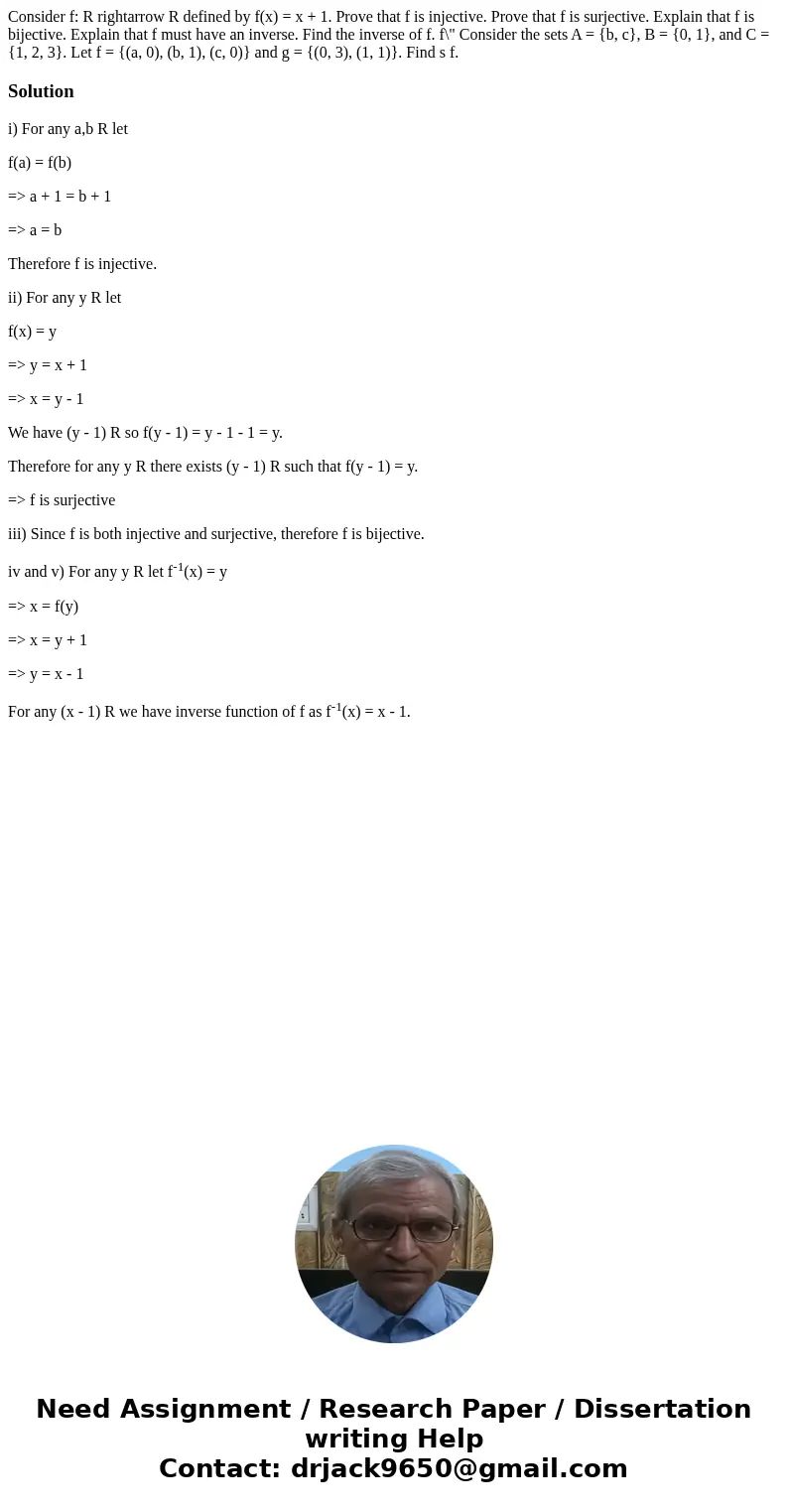Consider f R rightarrow R defined by fx x 1 Prove that f i
Consider f: R rightarrow R defined by f(x) = x + 1. Prove that f is injective. Prove that f is surjective. Explain that f is bijective. Explain that f must have an inverse. Find the inverse of f. f\" Consider the sets A = {b, c}, B = {0, 1}, and C = {1, 2, 3}. Let f = {(a, 0), (b, 1), (c, 0)} and g = {(0, 3), (1, 1)}. Find s f.
Solution
i) For any a,b R let
f(a) = f(b)
=> a + 1 = b + 1
=> a = b
Therefore f is injective.
ii) For any y R let
f(x) = y
=> y = x + 1
=> x = y - 1
We have (y - 1) R so f(y - 1) = y - 1 - 1 = y.
Therefore for any y R there exists (y - 1) R such that f(y - 1) = y.
=> f is surjective
iii) Since f is both injective and surjective, therefore f is bijective.
iv and v) For any y R let f-1(x) = y
=> x = f(y)
=> x = y + 1
=> y = x - 1
For any (x - 1) R we have inverse function of f as f-1(x) = x - 1.

 Homework Sourse
Homework Sourse